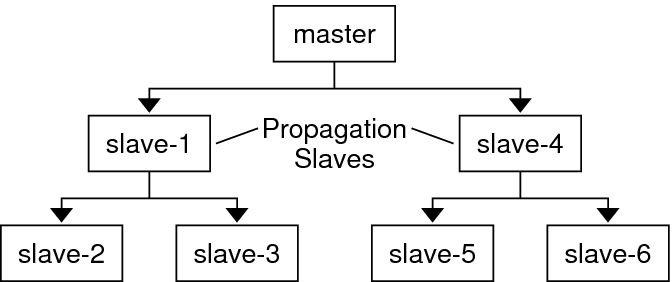Setting Up Parallel Propagation for Kerberos
In most cases, the master KDC is used exclusively to propagate its Kerberos database to the slave KDCs. However, if your site has many slave KDCs, you might consider load-sharing the propagation process, known as parallel propagation.
 | Caution - Do not configure parallel propagation if you are using incremental propagation. |
Parallel propagation enables specific slave KDCs to share the propagation duties with the master KDC. This sharing of duties enables the propagation to be done faster and to lighten the work for the master KDC.
For example, say your site has one master KDC and six slave KDCs (shown in Figure 4–2), where slave-1 through slave-3 consist of one logical grouping and slave-4 through slave-6 consist of another logical grouping. To set up parallel propagation, you could have the master KDC propagate the database to slave-1 and slave-4. In turn, those KDC slaves could propagate the database to the KDC slaves in their group.
Figure 4-2 Example of Parallel Propagation Configuration in Kerberos
